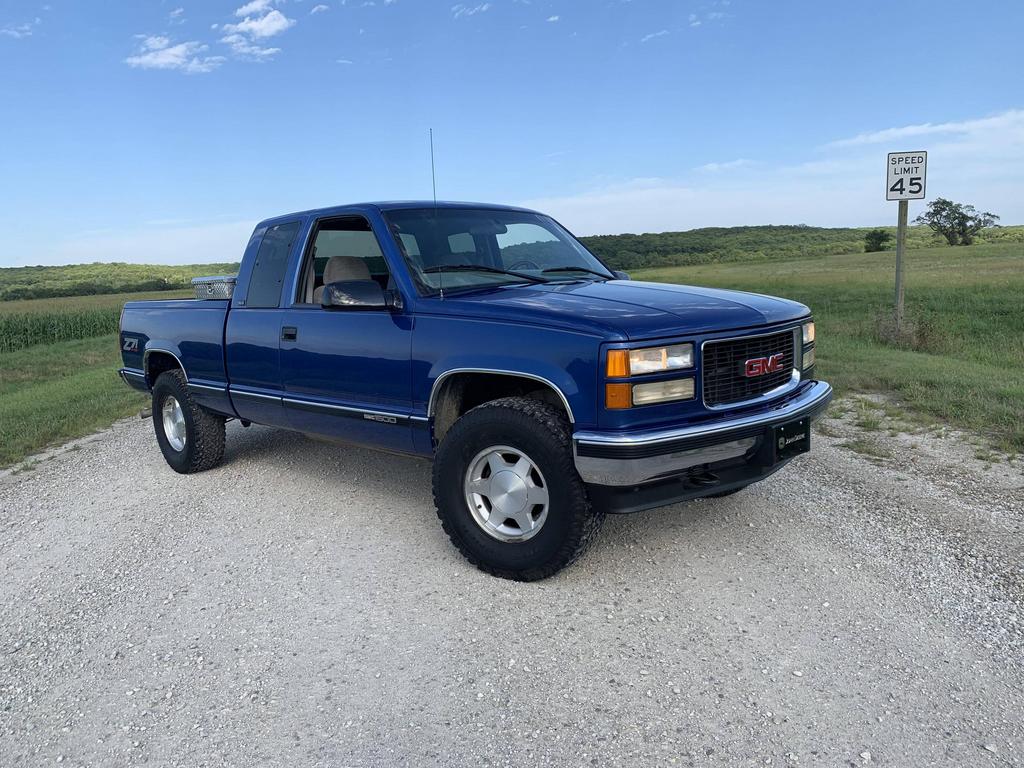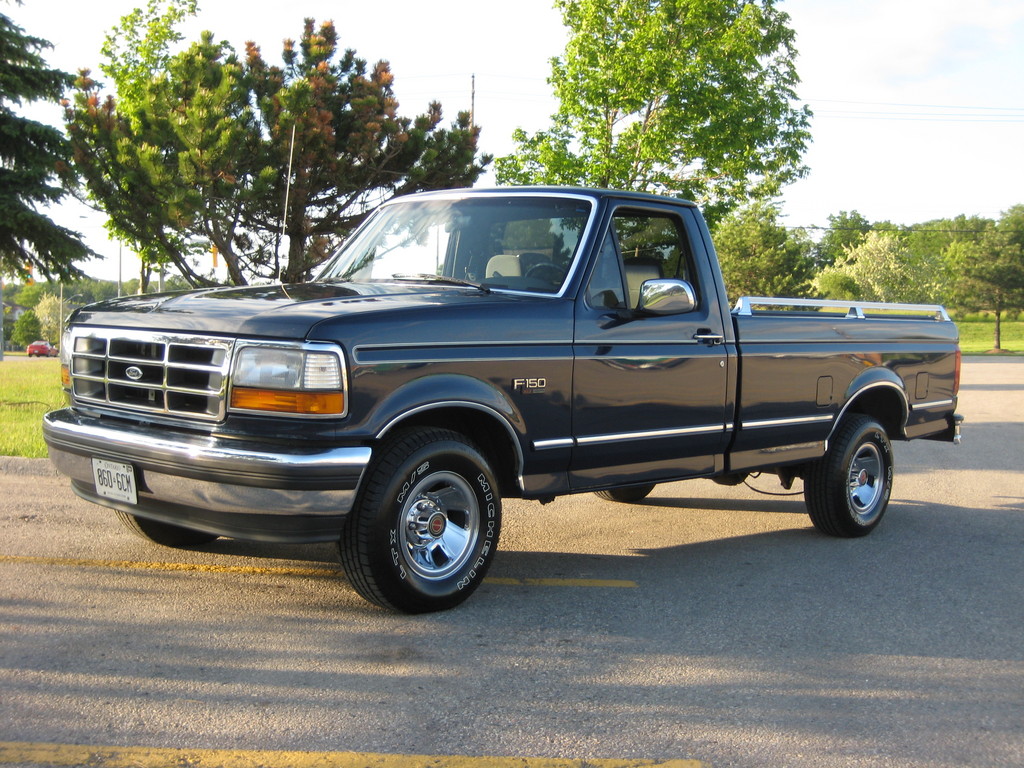You probably know that major U.S. auto manufacturers overhauled many of their truck designs in the late ‘90s and early 2000s. Fans of the previous look referred to this distinctive era as “OBS truck”, which is an abbreviation for “old body style” pickups. But that’s a pretty loose definition. This car reviews article will provide insight into “what does OBS truck mean” and some of the most notable examples on the market.
What Does OBS Truck Mean?
What does OBS truck mean? It means “Old Body Style” in reference to the boxy and rugged truck designs by American manufacturers of the 1990s era. The criteria for an OBS truck is rather loose, as it is a term used by enthusiasts of this old body style.

In general, an OBS truck is limited by year of production. Interestingly, some gearheads also coined the term “OOBS” to describe “old, old body style”, which is to be distinguished from OBS. The only other criteria of an OBS truck is that it’s American-made, but sometimes a desirable import model with the same style is also called OBS.
The start of the 1990s, or specifically the year 1988 is used to mark the birth of the classic OBS truck. Since the overhaul of pickup design happened around the year 2000, trucks from 2000 onwards are called “New Body Style” and 2000 marks the threshold for a truck to be considered OBS.
Now over two decades later, classic cars are becoming more popular than ever, and OBS trucks have been seeing increasing demand. Enthusiasts of the classic look quickly realized that these oldies but goodies can turn heads again with just a good paint job, a new set of rims, new rugged tires and other minor modifications that wouldn’t cost a fortune. Now, there’s a culture surrounding old body style trucks.
Most Common OBS Trucks
The OBS trucks are becoming highly desirable classics and thus, their price tags are becoming more than perfectly affordable. If you’re planning to buy one, you should act fast before prices rise even further.
As mentioned above, most old body style trucks are American-made. The most sought-after models are, without a doubt, come from the great three: Ford, Chevrolet and GMC. Below are major specifications and other information on the most notable models.
READ MORE
Chevrolet and GMC C/K
Marketed under the Chevrolet and GMC brands, the Chevy C/K series were manufactured by General Motors between the years 1988 and 1998. While most commonly associated with pickup trucks, the C/K series also included medium-duty and heavy-duty trucks.
Each version of the line was offered in either 2WD or 4WD drivelines. The “C” denoted a two-wheel drive while the “K” denoted four-wheel drive.
General Motors released eight different versions of the C/K line for 1988, each in either 2WD or 4WD: Fleetside Single Cab, Fleetside Extended Cab, Fleetside Crew Cab and Stepside Single Cab models. Three trim levels were available for the 1988 versions, including Cheyenne, Scottsdale and Silverado.
The shared fourth-generation C/K platform was internally known as GMT400. The C/K nomenclature was used only by Chevrolet, while GMC initially named their full-size pickup trucks Sierra.
Originally produced as a full-size pickup truck and chassis cab, the GMT400 platform expanded into full-size SUVs after only a few years in production. Like the Ford F-series’s 10th generation, the GMT800 platform that followed the GMT400 did not generate much of a hype like its predecessor. The GMT400 was used as a foundation for many of the most highly sought-after old body style trucks these days.
In 1990, Chevrolet introduced the 454 SS high-performance variant of the GMT400 under the Super Sport emblem, available only as a 2WD half-ton regular cab short box in Onyx Black. The 454 SS comes with a garnet red interior and unique exterior features, including special rims, red trim emblems, a front air dam with fog lights, and black painted grille, bumpers and mirrors.
The high-performance 454 SS was powered by a 7.4L V-8 producing 230 horsepower, enhanced by a 3-speed automatic transmission, Turbo Hydra-Matic 400 and 3.73 rear axle ratio. The axle itself is unique, being a 14-bolt semi-floating unit that uses standard Chevrolet 5 on 5-inch wheels, which was the only factory-produced 14-bolt axle with such a wheel bolt pattern.
The MSRP of the 1990 model was $18,295 and 13,748 units were sold during the first year of its introduction alone. Over the four years the 454 SS was in production, a total of 16,953 units were sold.
If you love that old-school look that only old body style trucks can offer, check out the following models, which all boast OBS trucks’ class-defining platform and distinct aesthetics :
- Chevrolet C/K
- Chevrolet Blazer
- Chevrolet Tahoe
- Chevrolet Suburban
- GMC Sierra
- GMC Suburban
- GMC Yukon
READ MORE
Ford F-Series

The old body style F-series include the seventh, eighth, and ninth generations, although some enthusiasts would argue that the seventh generation (1980-1986 model years) is too old and thus refer to it as OOBS (old-old body style).
The most popular examples of the seventh-generation OBS are F-150, F-250, and F-350 regular cab, super cab, and crew cab configurations. Being a major redesign of the 1965 model, the 1980 F-series received an all-new chassis and a completely new body with straighter body lines for improved fuel economy.
The seventh-generation F-series were available with V6, Inline-6 and V8 engines, with the most sought-after models being powered by V8 engines.
The eighth-generation of the iconic Ford F-series (1987-1991 model years) was a major revision of the 1980-1986 models, but built using the same cab and chassis of the seventh generation. For 2-door pickup or chassis cab configuration, the F-150, F-250, F250-HD, and F-350 are the most notable representatives from the eighth generation.
The major improvement is the significantly more streamlined design, which made maintenance cheaper and easier compared to all of its predecessors. The interior was completely redesigned, while the exterior also got many prominent upgrades, including composite headlamps, circular fenders, revised body panels and a completely new and more aerodynamic front fascia. In addition, engine options were updated with an increase in power and fuel economy.
The ninth generation F-series (1987-1991 model years) marks the final F-series OBS trucks from Ford. It was the second redesign of the 1980 models and still based on the classic architecture of the seventh-generation. The classic OBS appeal of the earlier F-series was well maintained, even with a facelift and several minor improvements to the exterior and interior, including a slightly lower hoodline, rounding the front fenders, bumper, and grille.
The larger F-series trucks, that is models F-250 and F-350, were replaced by Ford Super Duty trucks, with the F-150 remaining the only model of this generation. The F-150 has a sub-model with the FlareSide bed with a modernized bodywork to appeal to younger buyers.
The 1993 model year offered a turbocharger on the 7.3 L “IDI” diesel engine. In the middle of the 1994 model year (referred to as “1994.5”), the IDI engine was replaced with an entirely new design: the 7.3 L T444E turbo diesel, the first engine branded as a Ford PowerStroke.
Many hardcore OBS fans prefer the seventh and eighth generations, since the slightly rounded design of the ninth generation sits on the edge of the OBS category. Still, it still features older design cues and drastic differences in appearance compared to the tenth-generation, which no doubt belongs to the New Body Style.


